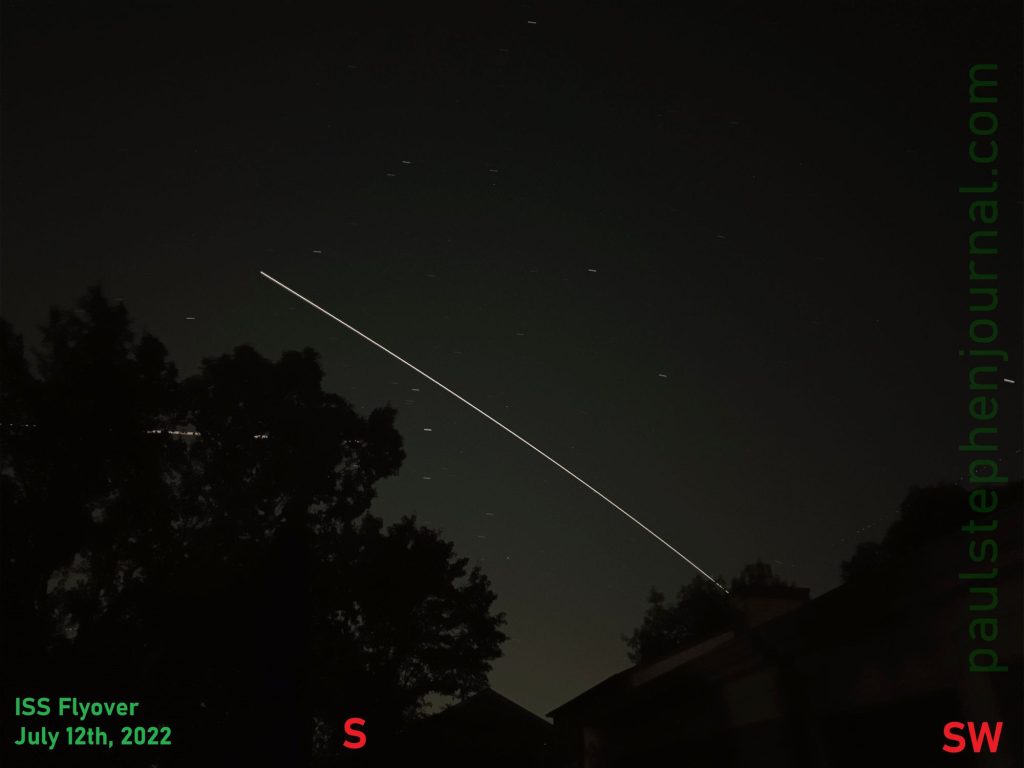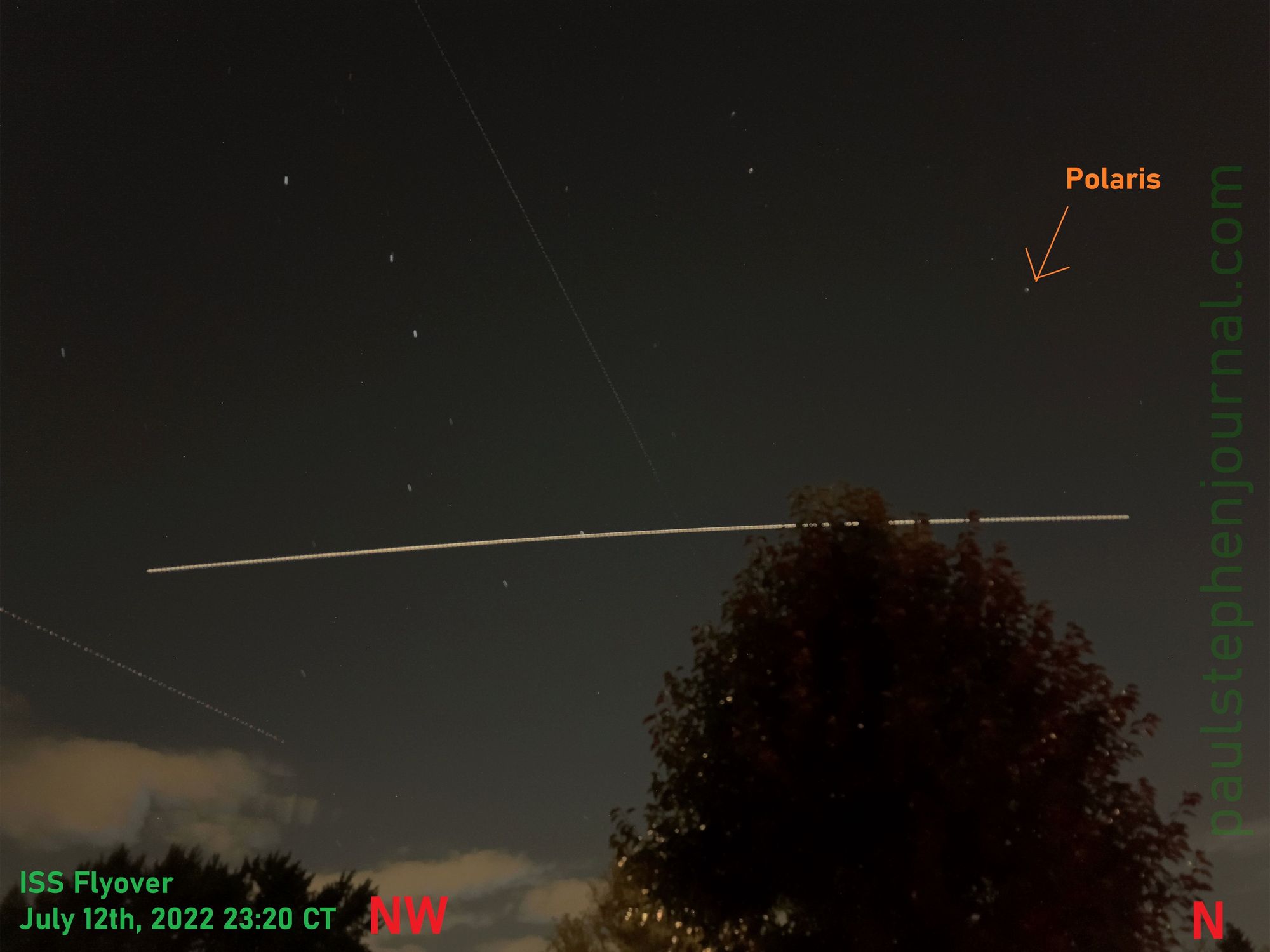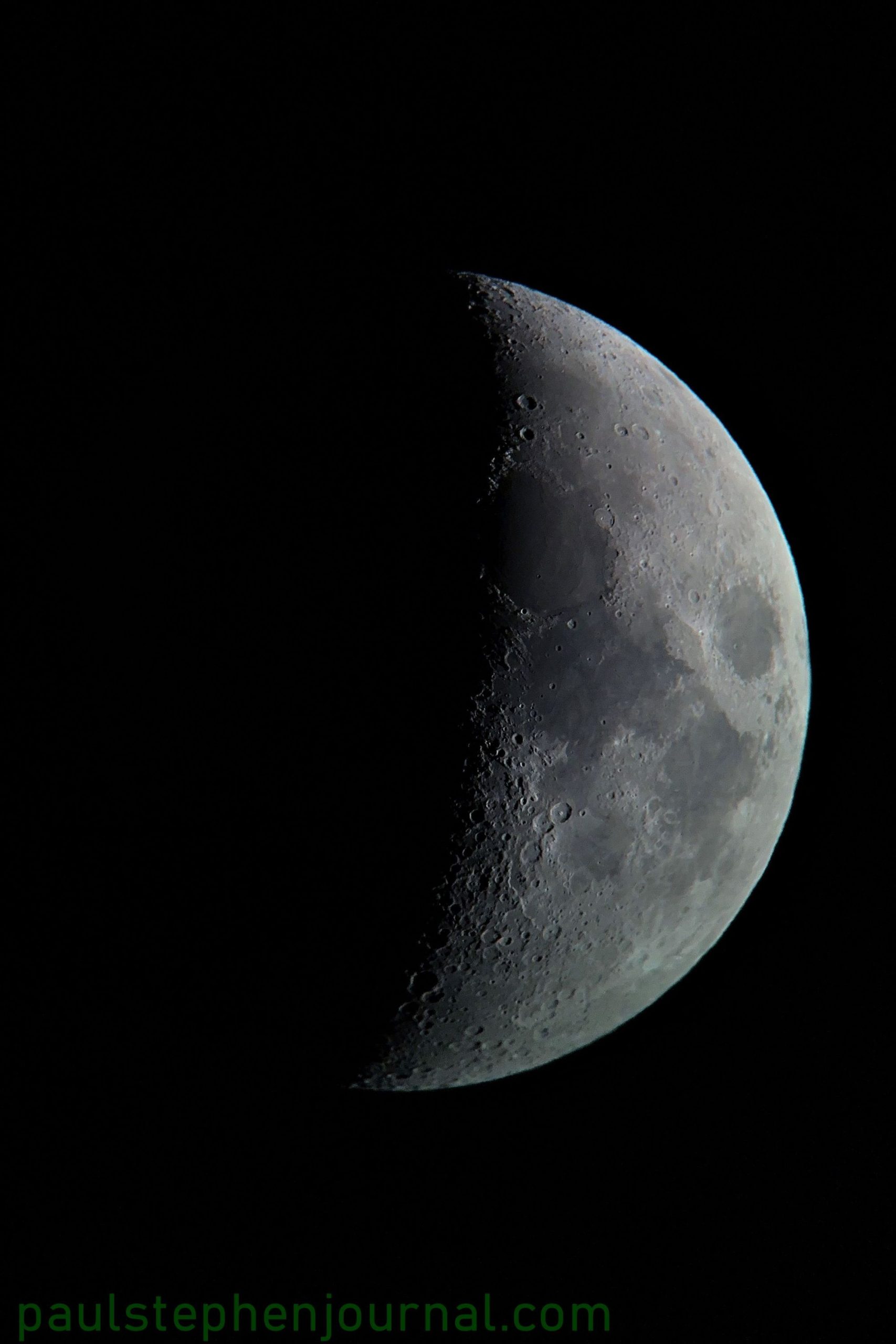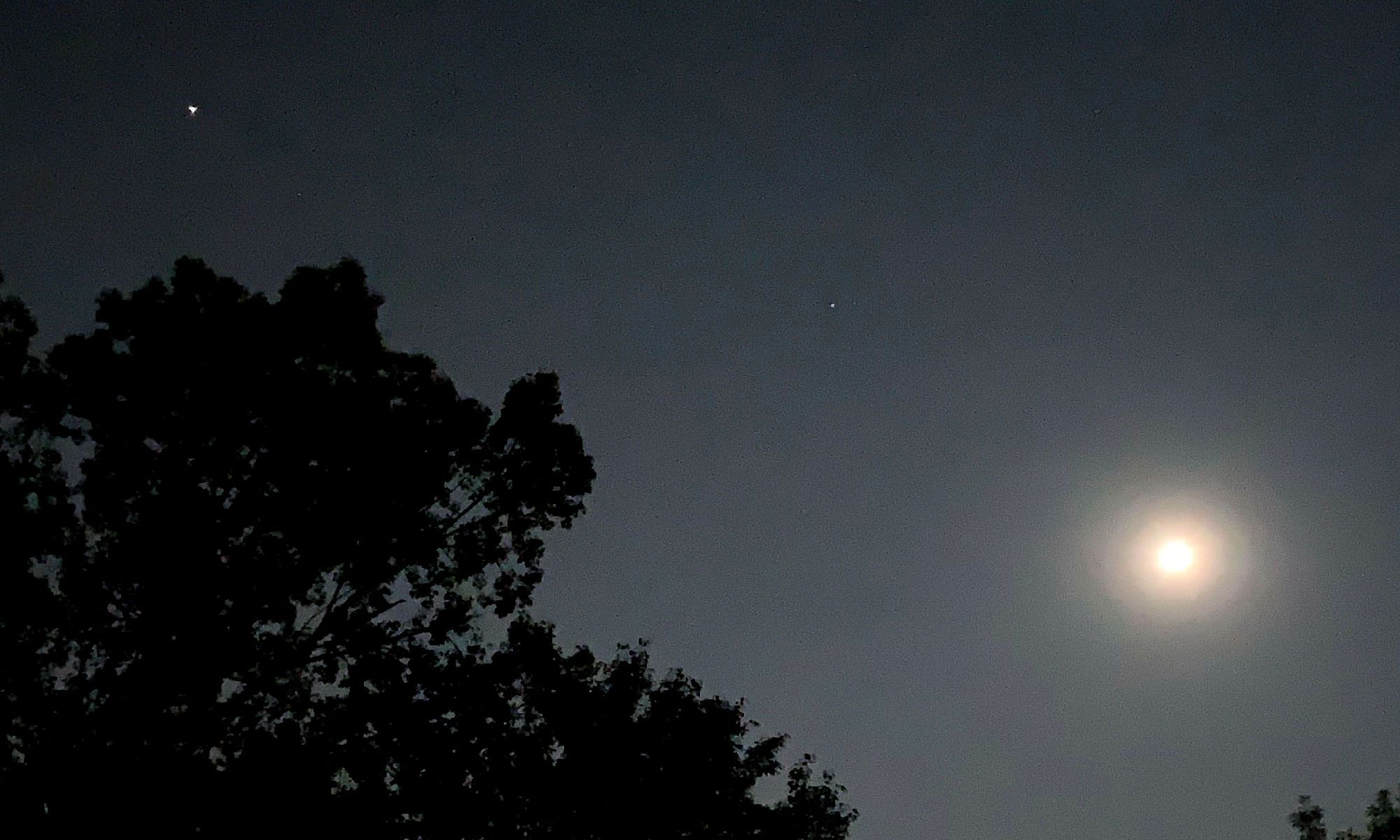July 12th, 2022, 9:43 p.m. local time
July 12th, 2022, 11:21 p.m. local time
There was a double feature showing tonight, in the sky. Actually it was the same show, just from different vantages, at different times.
The International Space Station made not one, but two appearances on this warm, July Summer evening, both easily visible. One was South, the other North. Though the paths and locations were different, when the ISS rose, it was the star among stars, though not the brightest object visible (that honor went to the near-Full Moon, meandering in the South).
This article will start with the second showing, as that had more going on. See the title picture, above. After 11 p.m. local time, the ISS rose from the West and traveled NNE. It ripped right through The Big Dipper, and nearly nicked the star Dubhe at the leading edge of the Dipper’s pan. It is rare to see the ISS travel so close to any star of significance in a constellation.
If you look at the picture above, you will see two other light streaks, fainter than the ISS’s. One on the left side, near the clouds, looks like a jagged sewing pattern. If you zoom in at it closely, you will see repeating red lights. This was a plane, far off in the West. It adds a three-dimensional aspect to the photo.
The third and faintest line in the picture may be the most intriguing. I did not see it while filming, as I was paying attention to centering the ISS’s light arc in my phone’s view screen. It cuts a line from the top center, almost parallel to the Dipper. Was this a plane as well?
Here is a prime opportunity to mention that Stellarium is a great open-source astronomy map. I use it all the time to find objects or to plan night observations. There is the web version, link above, and also a variety of platform-specifc Stellarium program versions you can install on nearly any type of computer or device.
When I saw this faint light streak, I immediately assumed it was a satellite. Sure enough, Stellarium confirmed my guess, as I rolled my sky at precisely the same time as the ISS flyover. There was an incredibly small dot moving downward which nearly intersected with the ISS after it left The Big Dipper.
Stellarium says the satellite is named TO-108 a.k.a. NORDAD 44881.

I am not a satellite aficionado, so I do not know what these designations mean. An Internet search of “TO-108” hints that it is some sort of transponder satellite. There are several sites that give telemetry, but only one that appears to try to explain what it actually is, AMSAT-SM – Official Website of AMSAT-SM Sweden, apparently a HAM radio-type site. From its dedicated page on TO-108 a.k.a. CAS-6:
The CAS-6 (TQ-1) microsatellite was launched December 20, 2019 on a CZ-4B launch vehicle from the Taiyuan Satellite Launch Center, China.
CAS-6 (TQ-1) was developed by the Chinese Amateur Satellite Group (CAMSAT) and in cooperation with China’s commercial satellite manufacturer.
The satellite carries CW and digital telemetry beacons and a linear transponder.
In the world above us, there a lot of stuff. There must be interesting stories on how some of that stuff, like TO-108, got into orbit, in this case from China as an apparent amateur satellite group’s project! I never even fathomed the possibility of an amateur satellite-group-anything until now.
My ornamental pear tree at the forefront of the image was intentional. My best view of the Northwest sky is from my driveway. The tree here is blocking the glare of a nearby street lamp. Trees are our allies in the fight again light pollution.
My second ISS phto, from earlier in the evening, shows the ISS’s path from the Southwest, this time headed upwards and East, through Libra (barely visible) and Scorpius. Observe the near-horizontal light beam in the trees on the left. This was an airplane, and I stopped the photo exposure before the plan intersected the ISS’s path.

Both of tonight’s images were taken with the NighCap app’s “ISS Mode” on my iPhone XS, anchored by a tripod. You can see star trail distortions after only a few minutes of these single exposures. Notice how the stars are not dots, but appear like mini horizontal rectangles. The sky does move fast.








